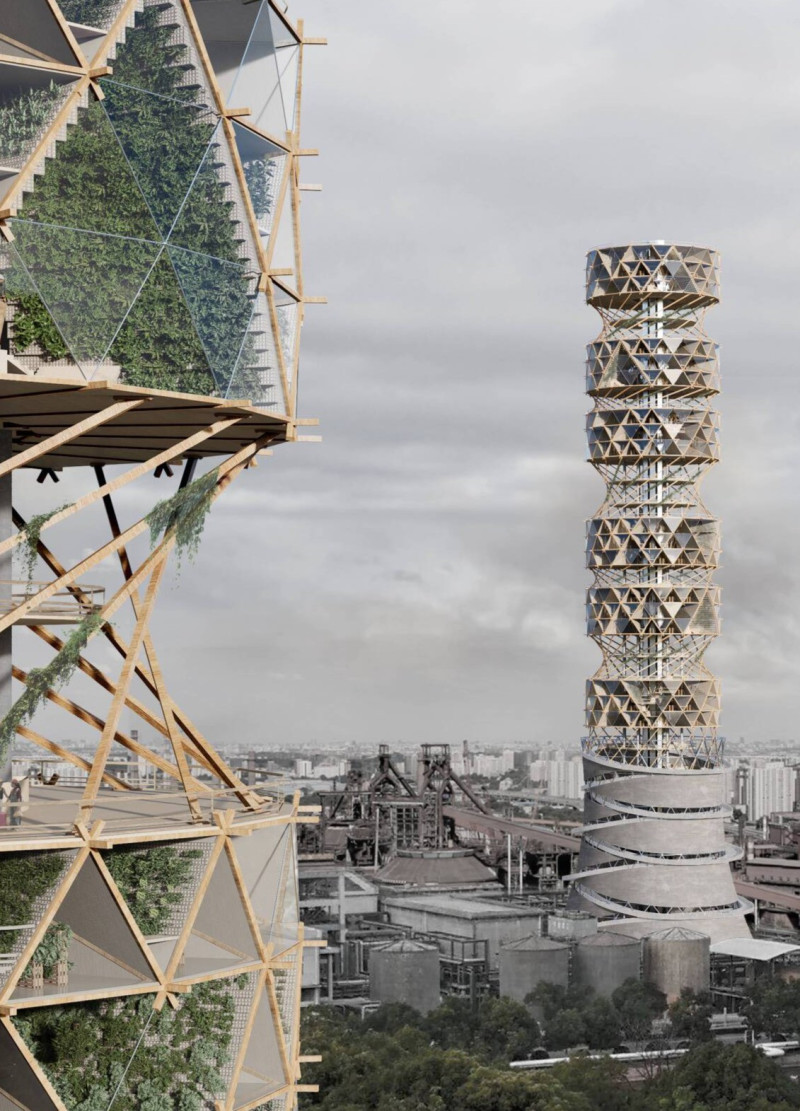5 key facts about this project
The Agricultural Rehabilitation Tower is located in Shenyang, Liaoning Province, an area known for its heavy industry. The design addresses the important issue of urban agriculture while also focusing on the need to protect farmland in a context where land prices are climbing. The concept involves creating a vertical agricultural facility that combines various sustainable farming practices within a multifunctional space that includes offices, an agro-ecological research institute, and a market.
Structural Design
The tower occupies a footprint of 6,400 square meters. It is designed to enhance agricultural output by making effective use of vertical space. Key elements include floating greenhouses, algae farms, and vertical seed banks, which allow various farming techniques to flourish in an urban environment. The vertical design not only maximizes land use but also supports multiple agricultural methods suited for city living.
Functional Layout
Inside, the Agricultural Rehabilitation Tower is organized into distinct unit blocks that serve specific functions, such as planting, office spaces, and research areas. Each section is carefully planned to ensure that agricultural research and community activities function well together. This layout improves interaction among users, creating a lively environment where researchers and the public engage and collaborate.
Sustainability Features
The project emphasizes sustainability with mechanical systems integrated for resource recycling, showcasing a commitment to environmental care. Existing cooling towers are adapted within the structure to provide necessary power and enhance environmental management. A winding passage allows visitors to experience the agricultural processes firsthand, promoting a deeper understanding of sustainable practices.
Interactive Spaces
The tower includes interactive elements like a greenhouse and a museum, which play a vital role in education. These areas encourage community involvement in urban agriculture and help to foster dialogue about food production in cities. This design makes agricultural practices visible to the public, enhancing awareness and appreciation for the processes involved in growing food within an urban setting.
The overall design features cultivation systems that can be seen from public areas, creating a direct connection between visitors and the urban agriculture occurring within the tower.



















































